THE CONCERT GRAND PIANOS
The world's greatest concert grand pianos!

The Concert Grand is the ultimate and finest of any piano manufacturer's products. They are meant to be used at the great concert halls, symphonic stages, and opera houses of the world. They are often "too much piano" for an ordinary house, and can be overpowering in a small room (kind of like having a tiger for a pet). But in an auditorium, where their sound is allowed to properly unfold and resonate, they are the most magnificent products of the piano craftsmen's art.
Below are pictures of most of the world's great concert grands (plus a cool oddity, the red "Ferrari" model). Any manufacturer makes several sizes of grand pianos, with the measurement being determined by the length of the instrument from the keyboard to the end of the tail. Most concert grands are around nine feet long, though the Bösendorfer Imperial is 9½ feet and the Fazioli is 10 feet. (The Bösendorfer even has nine extra keys, making it overall the largest of them all.) The advantage of a longer piano is that the strings are also longer, and that is what produces the great power and richness of the concert grands, allowing them to be easily heard clear to the back of a concert hall, even when accompanied by a full symphonic orchestra, all playing at the same time. Concert grands are only produced by the finest and most experienced manufacturers, often in very small quantities such as only 10 a year from any particular brand. They can cost up to $300,000 for the normal black models, and much much more for those with special carving, elaborate wood-work, and fancy veneers. Manufacturers of mass-produced, lower-price pianos seldom make concert grands, because concert halls or professional pianists would be unwilling to buy such a piano with the reputation of a budget brand. The companies that make concert grands have a tradition of excellent hand-craftsmanship and many of them have been in existence for almost 200 years. Several of the companies have been owned and operated by the same families since they were started in the early 1800's, and have a very prestigious image in the piano world.
Whatever you do, don't insult these magnificent instruments by calling them "baby" grands! Most people inexplicably think that any horizontal piano is a baby grand -- but how can any species exist if it is composed entirely of babies? Where there are babies, there must obviously be grown-ups too -- and there are; besides the concert grands, there are parlor grands, studio grands, salon grands, and semi-concert grands, depending on the length. Baby grands are those models that are only 5 feet long or less, front-to-back. They are seldom meant to be serious, professional instruments (you can get longer stings even in some upright pianos), often being referred to by musicians as "piano-shaped objects", or "noisy furniture", and have the reputation of being bought mainly for decoration by society dowagers, to be parked in the bay windows of their elegant living rooms, which of course quickly destroys whatever musical ability the instrument ever had by exposing it to daily variations in sunlight and temperature. In spite of all this, there are a few baby grands (the most expensive ones of course) that are nice pianos. Most budget brands nowadays though are made in China or Indonesia.
Since it can be hard to know the proper term for any particular piano you see (whether it's a concert, studio, parlor, baby grand, or whatever) (and the manufacturers aren't even very consistent with the terminology either), just refer to any of them as a "grand piano". In German they are called "Flügel" pianos (wing-shaped), in French they are "pianos à queue" and in Italian "pianoforti a coda" (pianos with tails).
So, much like the auto industry, pianos nowadays can have parts from anywhere, assembled in any of several different countries. However, the great concert grands shown below are all still pure examples of excellent piano-making from skilled craftsmen at original, highly reputable manufacturers, many with a great history stretching back to the most famous composers and performers from centuries ago; Chopin had his Pleyel, Mahler his Blüthner, Brahms his Bösendorfer, and Liszt his Bechstein.


Model 275 "Super Mondial"
Length 275 cm. / 9' 1" --- Weight 550 kg. / 1210 lbs.



Grotrian -- Braunschweig, Germany
Concert Royal

277cm x 156cm x 100cm 550kg
Only about 20 Grotrian Concert Royals
are produced annually.
Each one requires 8 months of manufacture.


Model E-272
8‘11” / 272 cm
1010 lbs / 458 kgs

Steingraeber pianos, made in Wagner's town of Bayreuth,
are some of the rarest and most highly prized of all pianos,
because of the extremely small number produced each year.

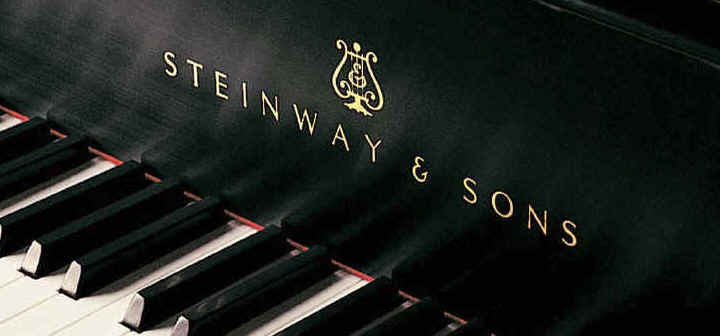

Model D Concert Grand
9' 11 3/4" (274 cm) 990 pounds (450 kg)


Steinway has long been the most famous American brand of piano.
The main factory is located in New York City.
However, the pianos made at their other factory in Hamburg, Germany

BECHSTEIN PIANOS -- Seifhennersdorf, Germany
Founded by Carl Bechstein in 1853


The Bechstein D 282 Concert Grand
Width: 63 inches / 160 cm
Length: 9 feet 3 inches / 282 cm
Weight: 1190 lbs / 540 kg




Blüthner is the only manufacturer to use "aliquot strings" -- a fourth string, placed above the normal three strings of the upper keys. This string is not hit by the hammers, but it vibrates in tune with the strings immediately below it, for an added richness of sound.
Many concert grands can be ordered with more ornate woodwork, such as this one, the Julius Blüthner Supreme Edition:


The Fazioli 308 is the crown jewel of the Fazioli series of grand pianos. Made in Sacile, Italy, it is the longest regular production piano in the world.
308 centimeters (10 feet 1 inch) --- 690 kilograms (1545 pounds). Four pedals.
The soundboard is made entirely of red spruce from the Val di Fiemme in the Alps of northeastern Italy -- the same wood that was used by Stradivarius for his legendary violins over 300 years ago.
Fazioli is by far the newest of the great piano companies of Europe, being established in 1981. It very quickly went right to the top in terms of quality, reputation, and price.


Fazioli also makes the Model 278 Concert Grand.
Even though it is their second-longest model,
it is still longer than the largest concert grands
of many other manufacturers.

Model 308
10 feet 1 inch
Model 278
9 feet 1 inch

The four pedals of the Fazioli 308:
The one on the left raises all the hammers
closer to the strings, to provide a softer volume
without altering the basic sound of the piano
like the una corda pedal does.

You can get your Fazioli totaly covered in
24-carat gold if you wish!






Bösendorfer, perhaps the world's most prestigious brand of all, is the only company to make two concert grands
with two completely different methods of construction.
The Model 280 (at 9' 2" or 280 centimeters) has the usual curved rim, made of many layers of thin veneers
bent around a form and laminated.
But the rim of the Imperial grand (9' 6", or 290 cm) is built quite differently from that of any other piano in the world,
being made in solid sections of wood that are then jointed together, producing angles instead of smooth curves.
It is also made of spruce instead of the usual maple or beech wood. The spruce is from the famous Val di Fiemme in Italy.
The Model 280 has the usual 88 keys, but the Imperial has 97. The nine extra keys are all on the bass end,
colored black so as not to disorient a player more accustomed to 88 keys.


The back of the Model 280,
showing the curved rim of the case.



 CZECH REPUBLIC
CZECH REPUBLIC
P 284 Mistral grand piano 284 cm / 9 ft 3 in Weight – 560 kg / 1232 lb

The company was established in 1864 by Antonín Petrof. In 1948, it was confiscated from the Petrof family by the government of Czechoslovakia. In 1991, it was finally returned to them, and now the fifth generation of the Petrof family is in control.
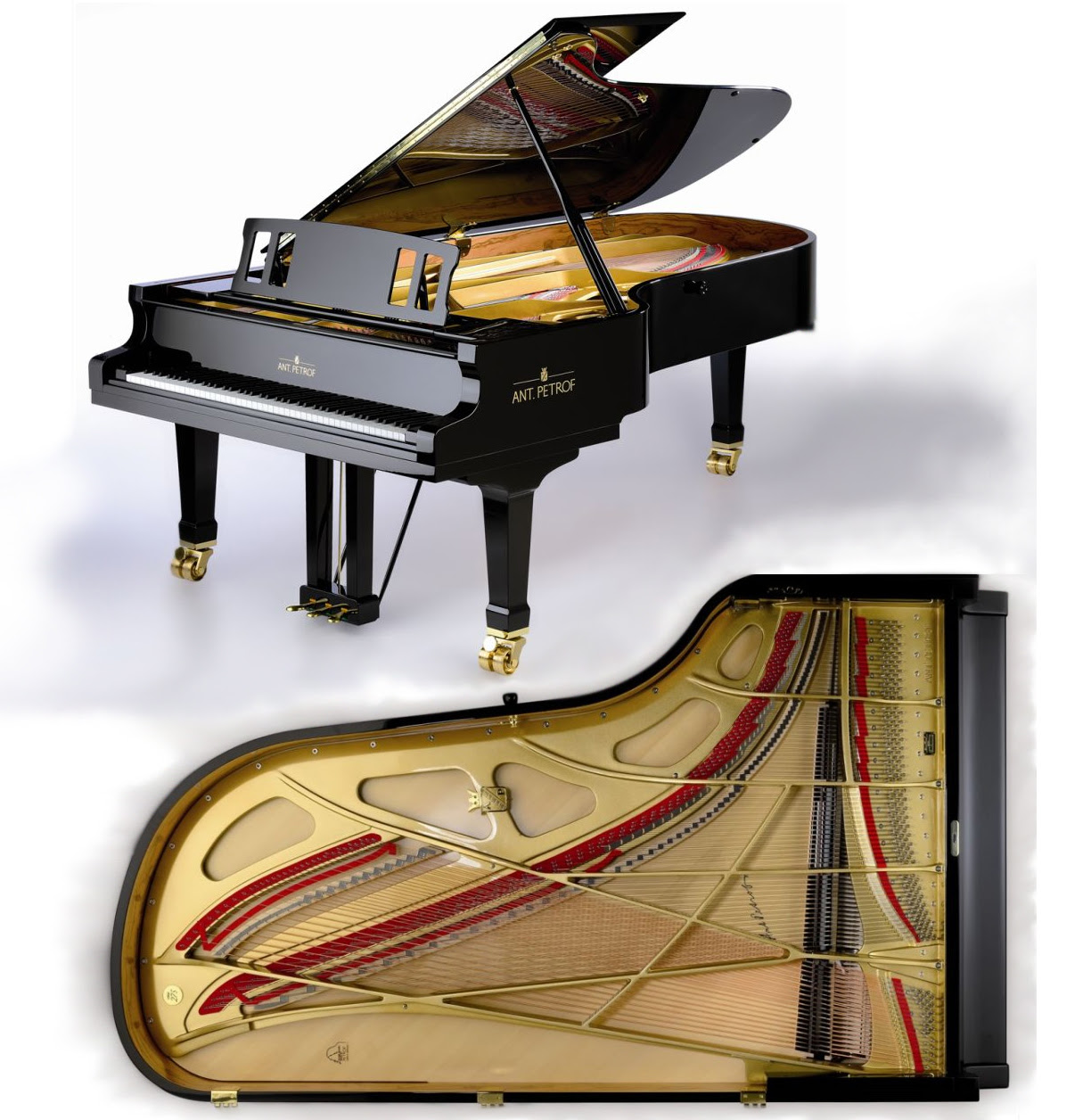
Ant. Petrof 275
Concert Grand piano
275 cm (9' 1") long
One of the world's newest models
of concert grand is the Ant. Petrof.
The founder of the company,
Antonín Petrof, used the same
abbreviation on his very first pianos.
Now, after 150 years,
the original brand has been reborn.

Schimmel is the largest piano manufacturer in Germany.
K280T Concert Grand in Ebony High Gloss
Length: 280 cmWeight: 490 kgUnfortunately, the famous French piano company Pleyel, in business for over 200 years,
ceased all production in 2013.
Pleyels were the favorite pianos of the greatest of all piano composers, Frédéric Chopin.
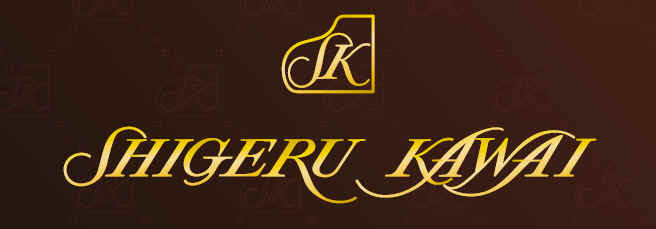
278 cm /9 feet long --- 504 kg -- 1111 lbs.

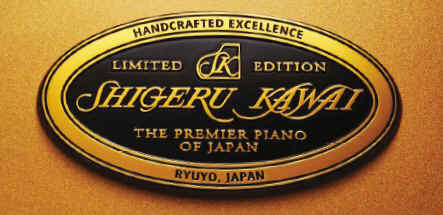
Speichingen, Germany
SAUTER 275 TITAN CONCERT GRAND©


Sauter, established in 1819, has been in continuous production longer than any other piano company in the world.


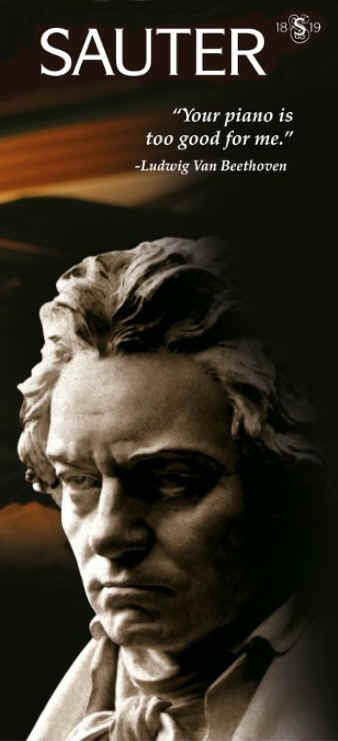


Schulze Pollmann, in spite of the German name, is located in the tiny republic of San Marino, which is surrounded by Italy. They do not make concert grands, but they are famous for their innovative models such as the Ferrari Rosso pianos.
Ferrari contacted Schulze Pollmann to obtain a red piano matching the color of their racing cars; this piano was meant to be used at their most prestigious worldwide dealerships and auto shows.
Schulze Pollmann's technical experts in painting and master carpenters did their utmost to replicate on wooden surfaces the same visual result requested by Ferrari, which, until then, had been obtained only on metal surfaces.
The 197 “Rosso Formula” comes from this experience; it is now produced upon request, in limited quantities. In addition to the exclusive red color, which is warm and shining, this piano offers other unique features: a matching bench with velvety-leather red top, an iron frame cast in carbon-grey color (like the racing cars' engines), and the inner side of the rim in the same metallic grey.




The concert stage has a formidable new star in the CC-94, the first concert grand designed, built and introduced by an American piano manufacturer in half a century.
Handcrafted in limited numbers using only the world’s finest materials, the CC-94 epitomizes the piano maker's art. It is distinguished by a massive rim, wide body, and oversized soundboard, guaranteeing that the CC-94 will retain all of its brilliant tonal characteristics throughout the life of the instrument. The CC-94 is available in classic ebony satin, polished ebony, and rosewood.
As always, Mason & Hamlin pianos are Made in America.





 SEILER -- Kitzingen, Germany
SEILER -- Kitzingen, Germany
- Columbus Dispatch 07/13/08 "I just had to write you an email to tell you that I am completely, totally, head-over-heels in love with my Estonia studio grand piano. In 25 years of playing the piano, I have never had an experience even remotely similar to the Estonia. I have never heard a piano sound so clear, touched keys that literally form to my fingertips, had such an ability to control the high and low registers, or be able to play so soft and so loud and yet have the notes sound so very different. I am truly a better, more proficient and happier piano player with my Estonia. Growing up with a Kawai, I always assumed that I would purchase the same, or at the very least, a Yamaha. But as soon as I sat down at the 5 foot, 6 inch Estonia, I knew that this was my piano, my instrument. As a composer, one issue with all of the other piano's on which I created music was that my shoulders would be sore after an hour or so of playing. After playing my Estonia for 7 straight hours with absolutely no pain, it is clear that the Estonia experience is unique in so many, countless ways.
The Estonia Piano, Hot And In Demand

Estonia is arguably "the hottest European piano on the planet." Immaculately crafted, Estonia pianos have a history dating back to 1893, yet the Estonia piano had been an almost unknown member of the piano industry until about 1999/2000 when Estonia, a tiny country just across the Baltic Sea from Finland, gained its independence after the break-up of the Soviet Union.
After Estonia gained its freedom, the country's nationalized piano company was privatized in 1994 under the ownership of its managers and employees. At that time, Dr. Indrek Laul, an Estonian and renowned pianist was a PhD candidate in piano performance at the Julliard School of Music.
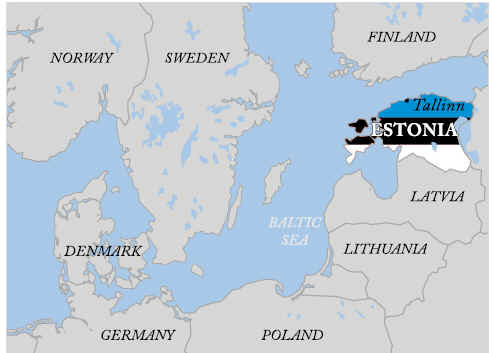

The rims are strong and thick, much thicker than most other pianos. Dense rims are important for a rich sound, plus solid beams support the overall tension of the piano structure, further adding to the balance and longevity of the instrument. Multiple layers of select North-European birch are glued together in a press where they dry over a long time; in addition, the outer frame is set aside to cure separately thereafter. After curing and testing, the wood is further shaped according to exact measurements to form the rim.
Probably a lot of you have, and on the other hand many others haven’t heard of the new kid on the block - The Estonia Piano.
According to the Columbus Dispatch, last year the Estonia Piano Factory in Tallinn exported 300 pianos both grands and baby grands, most of them to the United States. Chris Foley Points out that it would be interesting and important to know how these piano age. Sounding wonderful in a show room is one thing - sounding great after a few years is quite a different matter.
Dr. Indrek Laul Playing A Rachmaninoff Etude On His Estonia 210 Piano At The Factory
E S T O N I A P I A N O S
Tallinn, Estonia
Ebony Polish Estonia Concert Grand Model 274.
Length 9' 0"
Width 5' 2"
Weight 1213 lbs.
Over 7500 Concert Grand pianos have been made in Estonia, which is probably the largest number of concert grand made by any piano factory.Estonia Pianos is the only manufacturer from the former Soviet Union that has survived, and now has a reputation of excellent quality at a lower price than other European pianos. Estonia pianos have complete Renner actions made in Germany, the same as used by Fazioli, Hamburg Steinway, Bosendorfer and most other tier one pianos.”



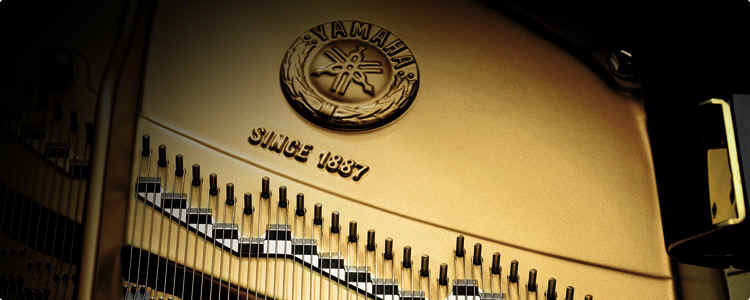

The Flagship of the CF series, the CFX full concert grand piano represents the pinnacle of Yamaha's tradition of piano crafting.



9 feet 1150 lbs
Pearl River of China is probably the only budget brand that makes a concert grand.
They are the largest piano manufacturer in the world, and sell most of their concert grands within China.
The Pearl River concert grand is also sold with the Ritmüller name:



The Brodmann 275, introduced in 2011, is partially made in China and then shipped to Austria,
where the strings and action are installed and all tuning, voicing, and regulation work is performed.

Phoenix, Arizona USA
Weight 560 kg (1,234.6 lbs)
Length 275 cm (9')
Height 104 cm (3' 5")
Width 159 cm (5' 3")


The frames for Ravenscroft pianos are made in Germany by Sauter, the oldest piano company in the world,
which are then shipped to Arizona where the piano is assembled.
Over 1000 hours of work is put into each piano, which is two or three times as much as most other companies.
These are the most expensive pianos made in America.



Newcastle, New South Wales, AUSTRALIA
 Stuart & Sons Concert Grand -- 9 feet 6 inches long.
Stuart & Sons Concert Grand -- 9 feet 6 inches long.

Stuart & Sons of Australia is the only company in the world to make a piano with 102 keys --an extra 9 in the bass, plus another 5 on the treble end. These cannot be considered as normal production pianos; only one or two are made a year, as special orders. They are often made with exotic Australian woods such as sassafras, sycamore or Tasmanian Huon pine. Each piano takes over a year to manufacture.
The 9' concert grand piano is perfectly located under a 30' ceiling of the family room. The acoustic is just right for the sound flows to the breakfast nook then to the adjacent open kitchen.
"Closely resembling the Hamburg Steinway in both sound and touch, the Estonia combines, in one instrument, some of the best qualities of the great American pianos with those of the high-end Europeans. Its rich, full-bodied, and three-dimensional sound is American-like, whereas its purity and clarity are European-like. Its most distinguishing feature is its wonderfully sustaining, lyrical tone. More than anything else, it is this quality of tone that defines the Estonia piano and gives it its own special place in the high-end market." -- Piano Buyer, Fall 2009
Estonia Concert Grand Model 274.
Length 9' 0"
Width 5' 2"
Estonia: 100% European hand made piano with clear, warm and notably resonant, singing tone qualities. Buyers: pianists & music lovers. With and without money..The action that Estonia is using does not contain just "Renner parts" that more then a few manufacturers try to pass as "Renner actions"...They also don't use Renner actions only on their top of the line concert grand models but other actions on almost all the other instrument they make, as some companies do.
The Estonia action is a FULL Renner action, which is being produced in Renner facilities in Germany, assembled in their Stuttgart, Germany factory, and sent to Estonia. Each and every Estonia has a full Renner action, from the concert grand to the smallest 5'6 piano.
The full Renner action includes the rail, repetitions, flanges, shanks, damper undelever mechanism, damper heads, and of course the assembly. Estonia is also using the top of the line Renner Blue hammers. These are the same hammers used on Hamburg Steinway and Mason & Hamlin pianos (the density is a bit different as to the manufacturers specs, but quality and price are the same).
All full Renner actions use the SAME quality of moving parts, and there is no significant price difference between them although geometry may be different as to the manufacturer's specs.
Almost all High-end European manufacturers use full Renner actions in their pianos...at least in their concert grand pianos and largest models.
The Renner action has proven itself and it's long-term reliability in high performance pianos.
This is not cheap piano wire, but an expensive part with thousands of moving parts.
Iron plates come from Finland, and are made the old-fashioned, European way.
In order to guarantee the right quality, they are sand-cast, seasoned, and only the best plates pass the final selection. They have one year of iron plates in their inventory, and only the best would be selected. It takes modern machinery to make even the rough surfaces and prepare for their mirror-like polish finishes,, at which their craftsmen show their experience. They continue to test them, to make sure that they do not interfere with the piano sound but are there to support the structure. Shiny, smooth, and even, they have received a lot of praise at international music trade shows, and are considered among the best from Europe.
Is it any wonder that Estonia became rated by Piano Buyer in same class of quality as Steinway NY this, in record time?Weight 1213 lbs. I have been reading on this piano for several years, because of their reputation for their quality sound and probably the equal of a Steinway and the making of a stradivarius of pianos in the future. A very wise investment and a good family heirloom to pass down.
In the music room is a 7 and a half semi concert grand and an antique upright grand.
The strings are held over the bridge (the thin long wood on top of the sound board) are usually made from several strips of beech or maple which are laminated on top of each other. The top of the bridge is capped with a thicker, solid strip of maple. The bridges are glued directly to the top of the soundboard, and the bottom edge of each bridge is designed to precisely fit the crown of the soundboard. Metal bridge pins are driven into the top of the bridge, and they serve to evenly space and align the strings as they pass over the bridge. There are over 220 strings on the grand piano - at two bridge pins per string, there are over 440 bridge pins driven into the bridges. Notches cut into the top of the bridge make its front end slightly higher than the path of the strings. This ensures a tight connection and optimal transmission of sound vibrations between the strings and the soundboard. The bridges define the exact speaking length of the strings on the far end of the piano
Here it is: “It is one of the best-kept secrets in piano making today.” The keybed on Estonia pianos is built into the rim. This unique feature - to have the piano components all connected and supportive - is an old tradition. How many other makers would spend the time to set the keybed into the piano rim? It is a lot more time consuming process, as compared to attaching the keybed separately under the rim. Estonia continues the old traditions of European piano making. The look of the ebony polish finish, made with the Euroepan, shiny polyester laquer, is classic - very elegant and very European. It protects the piano surface and lets minor scratches, if they were to come from using the instrument, to be polished out. Piano making in Estonia stretches back 200 years, but the company itself was founded in 1893 by Ernst Hiis, an Estonian master craftsman trained at Steinway-Hamburg. When the Soviets annexed the Baltic state in 1940, the conquered country was forced to give Joseph Stalin a gift, and the nation of 1.5 million gave a Hiis-made piano. Stalin apparently loved the handmade grand, and the Soviet commissars made sure Hiis was given a factory to consolidate all other Estonian piano workshops under him and a near-monopoly to supply the empire with grand pianos newly branded with the Estonia name.


Production peaked under the Soviets at 475 grand pianos a year, but, isolated from new techniques, the Estonia factory inevitably fell into decline after Hiis’ passing. The Berlin Wall fell, Estonia regained its national independence, and in 1993 the factory’s 130 employees took the piano maker private.






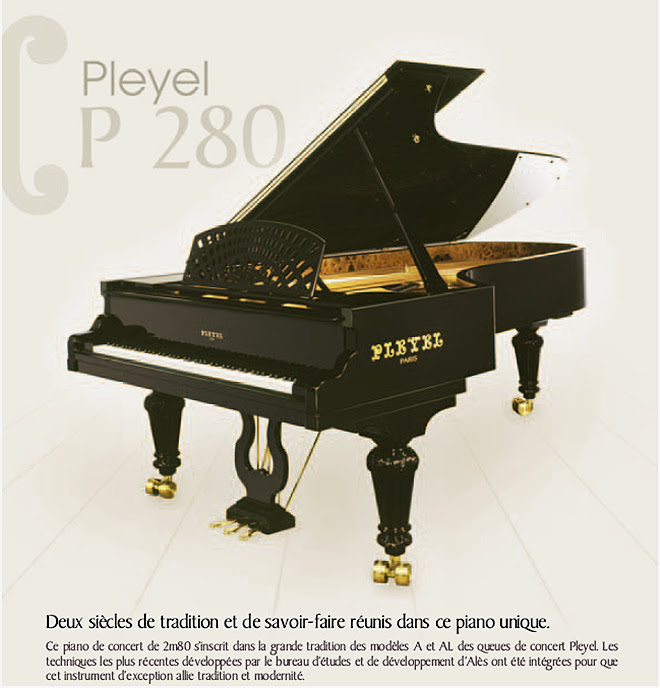














No comments:
Post a Comment